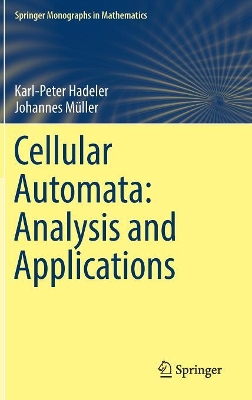
This book provides an overview of the main approaches used to analyze the dynamics of cellular automata. Cellular automata are an indispensable tool in mathematical modeling. In contrast to classical modeling approaches like partial differential equations, cellular automata are relatively easy to simulate but difficult to analyze. In this book we present a review of approaches and theories that allow the reader to understand the behavior of cellular automata beyond simulations. The first part consists of an introduction to cellular automata on Cayley graphs, and their characterization via the fundamental Cutis-Hedlund-Lyndon theorems in the context of various topological concepts (Cantor, Besicovitch and Weyl topology). The second part focuses on classification results: What classification follows from topological concepts (Hurley classification), Lyapunov stability (Gilman classification), and the theory of formal languages and grammars (K?rka classification)? These classifications suggest that cellular automata be clustered, similar to the classification of partial differential equations into hyperbolic, parabolic and elliptic equations. This part of the book culminates in the question of whether the properties of cellular automata are decidable. Surjectivity and injectivity are examined, and the seminal Garden of Eden theorems are discussed. In turn, the third part focuses on the analysis of cellular automata that inherit distinct properties, often based on mathematical modeling of biological, physical or chemical systems. Linearity is a concept that allows us to define self-similar limit sets. Models for particle motion show how to bridge the gap between cellular automata and partial differential equations (HPP model and ultradiscrete limit). Pattern formation is related to linear cellular automata, to the Bar-Yam model for the Turing pattern, and Greenberg-Hastings automata for excitable media. In addition, models for sand piles, the dynamicsof infectious d
| ISBN: | 9783319530420 |
| Publication date: | 15th June 2017 |
| Author: | Karl-Peter Hadeler, Johannes Müller |
| Publisher: | Springer International Publishing AG |
| Format: | Hardback |
| Pagination: | 467 pages |
| Series: | Springer Monographs in Mathematics |
| Genres: |
Cybernetics and systems theory Mathematical physics Computational biology / bioinformatics |